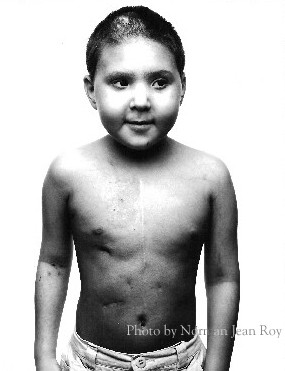
Looks like Adam Nash just had a birthday. I was trying to do something nice for Molly and it fell through. I feel terrible about disappointing her.
It is Joe's birthday on Saturday. He will be 6. A lot of festivities are planned. Later on I will show you what we got him for his birthday. I'll give you a hint: it has something to do with baseball.
Joe is proud that he is the best underarm farter in school - according to him. He says that Samantha Knapp is pretty good too.

October 1, 2007
BREAKING NEW GROUND
Beth Whitehouse
Oct. 1--The first child in the world born after PGD confirmed he would be a bone marrow match for his older sister is today 7 years old and in first grade.
Lisa and Jack Nash of Englewood, Colo., said they tested their son Adam's embryo to ensure he didn't have the bone marrow disorder Fanconi anemia his sister Molly had and to ensure he would be a tissue match for her.
Finding cure for their daughter
The Nashes speak publicly to people all over the world about what they did to cure their daughter.
"By us being public, other people learn about it," Lisa Nash said.
Fanconi anemia is similar to Diamond Blackfan anemia, the bone marrow disorder Katie Trebing has, in that the patient needs regular blood transfusions to stay alive. However, it is more dangerous. Molly was a few months from death when she had her bone marrow transplant in 2000 using blood from Adam's umbilical cord, Lisa Nash said.
Saving Molly's life was not the sole reason the Nashes had Adam, Lisa Nash said in a telephone interview.
"We had Adam first and foremost because we wanted a bigger family," she said. The Nashes said they would have had Adam through PGD to ensure he didn't have Fanconia anemia, even if it wasn't an option to also check for sibling matching.
"The fact that he was able to help her really was icing on the cake," she added.
Brother's cord blood used
Molly had a bone marrow transplant using Adam's umbilical cord blood the month after he was born. Her bone marrow is now free of Fanconi anemia.
However, there are still concerns about her health. "These kids are still very prone to certain types of cancer. We watch her very closely for head and neck cancers," said Lisa Nash, 41.
Molly has other physical ailments related to her disease. She is deaf in one ear, was born without thumbs, and is fed with a feeding tube, her mother said. Her thyroid failed -- a late-term effect of the chemotherapy that preceded the cord blood transplant -- and she recently had surgery to correct cataracts.
Molly is now 13 years old and is in seventh grade. "The spirit in her and the fire in her -- she is just an amazing, amazing kiddo," her mother said.
The Nashes have since had another child using PGD to avoid Fanconi anemia. Delaine Nash is 4.
The Nashes said they don't talk to the children about the role Adam played in Molly's survival.
"If you ask Adam what happened, he'd say, 'I gave Molly my blood so she would feel better.' Someday when they're old enough, we'll explain it to them," Lisa Nash said. "We want our kids to have normal lives and be just like everybody else."
She scoffs at critics who fret donor children such as Adam might one day feel they weren't really wanted.
"Adam, being the sole male in the family, he is the be all and end all," she said. He is "idolized" and "adored," she said.
Call for oversight
To anyone who worries taking a cell from an embryo -- as is done in PGD testing -- might prove harmful later, Lisa Nash said of her son, "He walks and he talks and he reads. The only thing we see is he can't play basketball, but neither can his father. If you want to attribute something to pulling off the single cell, he can't play basketball."
As for how much they would use Adam in the future to help Molly, Lisa Nash said she and her husband decided before Adam was born they would only use his cord blood and not his bone marrow to cure Molly.
"Adam was brought here because we loved Adam and not for spare parts," she said. The cord blood, she said, was "his garbage. He didn't need it any more. When it came to taking bone marrow from Adam, that wasn't okay in our eyes. That's where we drew the line."
So far, they haven't had to test their resolve.
Lisa Nash said she is a proponent of government oversight of the use of PGD technology. "The government should look at it and put some kind of boundaries and barriers," she said.
Perhaps, she said, insurance companies might also pay for the procedures if they were regulated. She said they spent $250,000 to have Adam, because they had to go through in vitro fertilization five times before it worked. They took out a loan to pay for it.


No comments:
Post a Comment